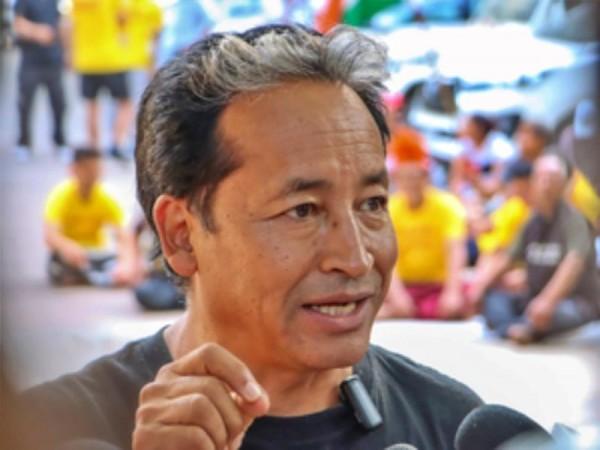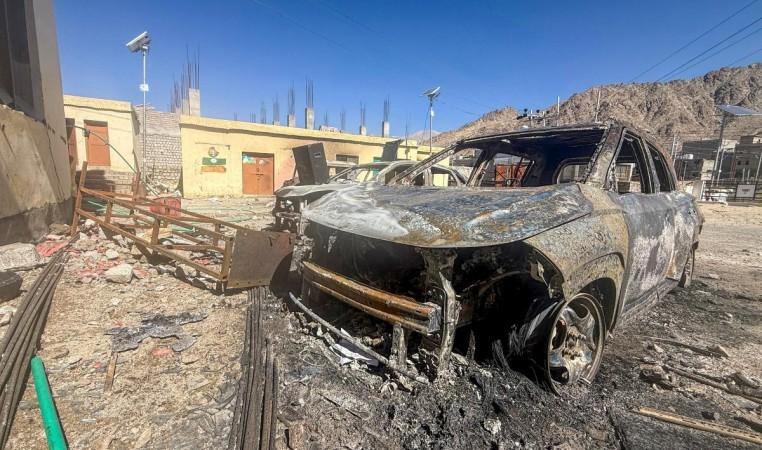
The detention of Sonam Wangchuk, the distinguished climate activist and 2018 Ramon Magsaysay Award recipient, on September 26, 2025, under India's National Security Act has propelled the remote Union Territory of Ladakh into international focus. This action followed violent protests on September 24, which resulted in four fatalities and over 90 injuries, amid escalating demands for regional autonomy. Wangchuk, celebrated for his environmental and educational contributions, faces accusations of inciting unrest and violating financial regulations, while his supporters denounce the arrest as a calculated suppression of dissent. This op-ed synthesizes verified documents, official statements, and firsthand accounts to dissect the crisis, evaluating the competing imperatives of state security and tribal self-determination. It contends that the deadlock stems from a failure of constructive dialogue, intensified by geopolitical sensitivities, and proposes a pathway to reconciliation to prevent further escalation.
Genesis of Discontent: A Region's Unfulfilled Aspirations
Ladakh's grievances originate from the August 5, 2019, revocation of Article 370, which dismantled Jammu and Kashmir's special status and reorganized Ladakh as a centrally administered Union Territory. Initially welcomed in Leh, the decision soon sparked disillusionment as assurances of empowerment faltered. The Leh Apex Body and Kargil Democratic Alliance have since demanded full statehood, inclusion under the Sixth Schedule for tribal autonomy, localized job and land protections, and distinct parliamentary representation for Leh and Kargil. These demands reflect concerns over demographic shifts, corporate encroachments, and environmental degradation in a delicate Himalayan ecosystem.
Official records document six rounds of negotiations with the Ministry of Home Affairs since 2023, yielding limited concessions, such as a 33 percent job quota for locals. However, the absence of progress on statehood or Sixth Schedule protections has deepened unrest, particularly among youth facing approximately 40 percent unemployment in certain districts. Wangchuk, through his Students' Educational and Cultural Movement of Ladakh and Himalayan Institute of Alternatives Ladakh, has spearheaded non-violent campaigns, including a 15-day hunger strike commencing September 10, 2025. His 2024 Delhi Chalo march, briefly detained but resolved without charges, exemplified his commitment to peaceful advocacy.
The September 24 protests, however, descended into violence, with youth attacking the BJP headquarters and LAHDC-Leh secretariat, torching vehicles, and clashing with security forces. Hospital records cite the collapse of two hunger strikers as a catalyst, but the Ministry attributes the unrest to Wangchuk's provocative rhetoric, referencing global protest movements. Contrarily, eyewitness footage captures Wangchuk urging calm in Ladakhi and Hindi amid gunfire, supported by the Leh Apex Body's claim of spontaneous youth outrage. The lack of publicly released speech transcripts leaves this contention unresolved, encapsulating the central tension: state security imperatives versus regional cries for recognition.
State's Rationale: Prioritizing Order in a Strategic Frontier
The Ministry of Home Affairs and Ladakh administration perceive Wangchuk's actions as a destabilizing force in a geopolitically sensitive region bordering China, where stability is paramount. The timing of the September 24 violence, just before a scheduled Ministry meeting, is viewed as a deliberate disruption. The invocation of the National Security Act, permitting detention without charges for up to two years, underscores the portrayal of Wangchuk as an instigator. Official statements assert his speeches guided the mob, a narrative reinforced by the detention of over 50 individuals and the imposition of a curfew with internet suspension to curb misinformation.
Financial irregularities bolster the state's case. On September 25, the Ministry revoked SECMOL's Foreign Contribution Regulation Act license, citing violations including a 3.35 lakh rupee local deposit from a 2021-22 bus sale in an FCRA account, contravening Section 17, and a 4.93 lakh rupee Swedish grant for sovereignty studies deemed contrary to national interests. The Himalayan Institute faces a Central Bureau of Investigation probe for over 1.5 crore rupees in unregistered foreign remittances, with audits allegedly concealing inflows. The revocation of a 135-acre land allotment in Phyang for unpaid dues, now totaling 37 crore rupees, further fuels allegations of mismanagement, with critics questioning the environmental impact of Wangchuk's Ice Stupas.
A February 2025 visit to Pakistan for a Breathe Pakistan eco-conference has heightened suspicions. The Central Bureau's July inquiry explores potential anti-India coordination, noting the trip's alignment with escalating Ladakh tensions. Government-aligned voices on social media amplify this, branding Wangchuk a foreign-backed agitator. However, no definitive evidence, such as communications or financial trails, substantiates these claims, suggesting the state's response may overemphasize procedural lapses to justify containment.

Protesters' Grievances: A Quest for Equity and Identity
Wangchuk and his allies refute incitement allegations, framing the arrest as a strategic effort to stifle legitimate demands. The Leh Apex Body and Kargil Democratic Alliance argue that six years of stalled negotiations have marginalized locals, with youth unemployment and corporate incursions threatening cultural and ecological integrity. Wangchuk's hunger strike, supported by over 5,000 students and monks, was non-violent until hospitalizations sparked unrest. His appeals for peace during the clashes, corroborated by media interviews, challenge the Ministry's narrative, though unpublicized audio sustains ambiguity.
Regarding financial allegations, Wangchuk asserts that FCRA deposits were legitimate transactions from UN and European contracts, with taxes paid, and the Swedish grant supported climate migration research, not sovereignty. The Himalayan Institute's land dispute, he contends, arose from funding constraints, not malfeasance, with the project aimed at sustainable education. The Pakistan visit, per conference records, focused on glacial melt solutions, with Wangchuk endorsing India's environmental policies. Opposition leaders from Congress, PDP, and AAP denounce the arrest as authoritarian, a sentiment echoed online by supporters citing Wangchuk's global recognition and SECMOL's impact on over 10,000 students.
The protesters' broader concern is systemic suppression. The National Security Act's application, alongside over 1,000 detentions in Jammu and Kashmir and Ladakh since 2019, signals a heavy-handed approach that risks alienating a region grappling with post-2019 centralization. Environmental threats, evidenced by rising temperatures, amplify fears of unchecked development, while the lack of separate parliamentary seats and a local Public Service Commission deepens disenfranchisement.
Synthesis: A Policy Stalemate with Geopolitical Stakes
The Ladakh crisis reveals a profound disconnect: the state's imperative to secure a volatile frontier clashes with the region's demand for self-determination. Verifiable evidence supports both sides—financial and land-related lapses justify scrutiny, but six years of unfulfilled promises validate grievances. The state's use of the National Security Act and FCRA cancellations, while legally defensible, appears disproportionate without clear proof of Wangchuk's incitement or foreign collusion. The Pakistan visit, though ill-timed, aligns with regional eco-collaboration, lacking substantiated anti-India intent. Conversely, the protesters' inability to curb youth violence provides the state leverage, though the Leh Apex Body's disavowal of coordination holds absent contrary evidence.
Polarization clouds the discourse. Official releases prioritize security, minimizing policy failures, while protester narratives emphasize repression, downplaying internal protest dynamics. Social media reflects this divide, with government supporters pushing unproven foreign-hand theories and Wangchuk's allies invoking his legacy. The truth lies in a mutual failure: partial concessions cannot mask the absence of a Sixth Schedule framework, driving unrest, while violent protests undermine advocacy.
Toward Resolution: A Precarious Path Ahead
Three scenarios emerge. Most probable (60 percent), Wangchuk's release by October 1 via NSA review could catalyze October 6 negotiations, potentially yielding partial Sixth Schedule concessions but strained trust. A medium-likelihood (30 percent) prolonged detention, if the Central Bureau uncovers funding ties, risks youth radicalization and international scrutiny, impacting Ladakh's tourism-driven economy. A low-probability (10 percent) judicial inquiry could clarify lapses and offer reforms, but demands political resolve.
To avert escalation, the government must expedite a transparent Sixth Schedule roadmap, paired with a judicial FCRA review to address violations without targeting activism. Protesters must channel youth energy into structured advocacy, avoiding violence that invites crackdowns. Ladakh, a geopolitical fulcrum, cannot sustain further alienation. Reconciliation hinges on bridging security and autonomy through dialogue, lest a fractured frontier emboldens unrest.
[Major General Dr Dilawar Singh is an Indian Army veteran who has led the Indian Army's Financial Management, training and research divisions introducing numerous initiatives therein. He is the Senior Vice President of the Global Economist Forum AO ECOSOC, United Nations and The Co President of the Global Development Bank.]

















